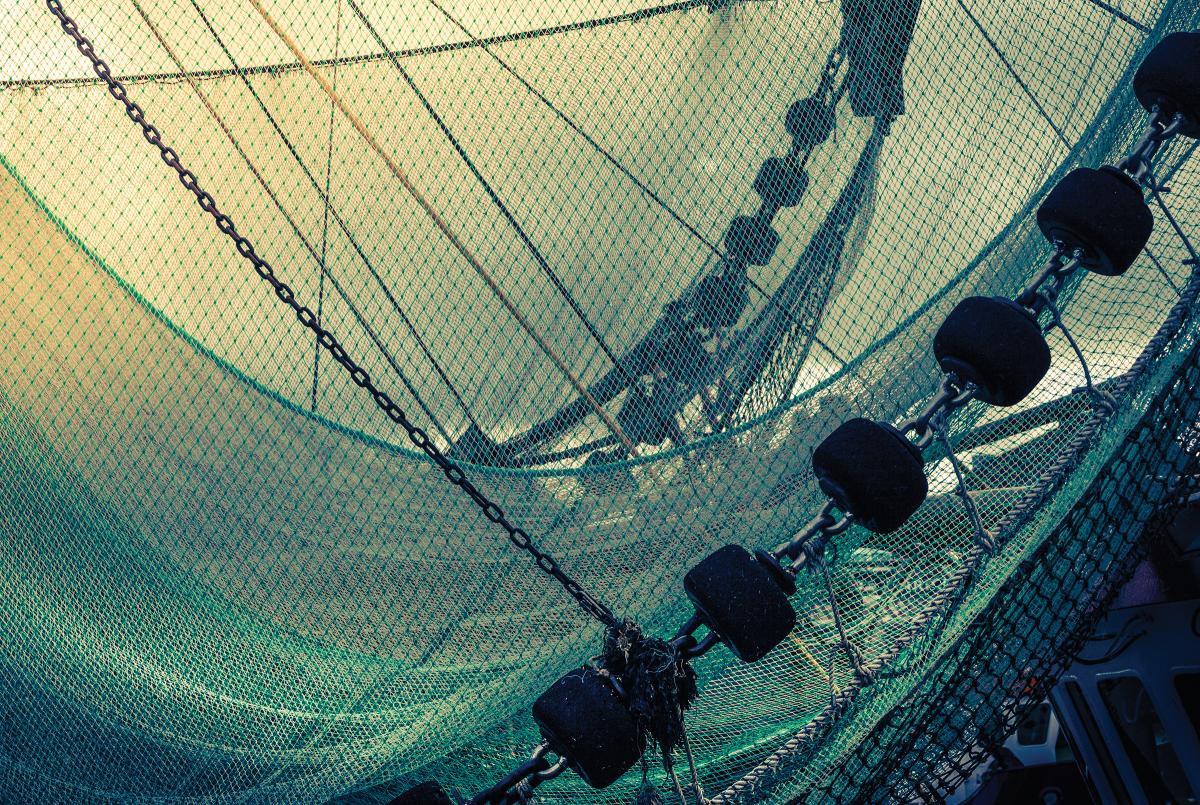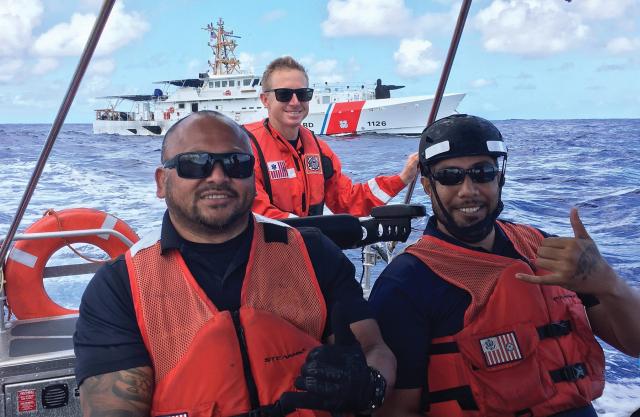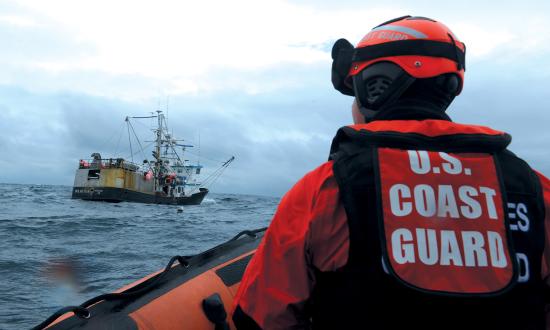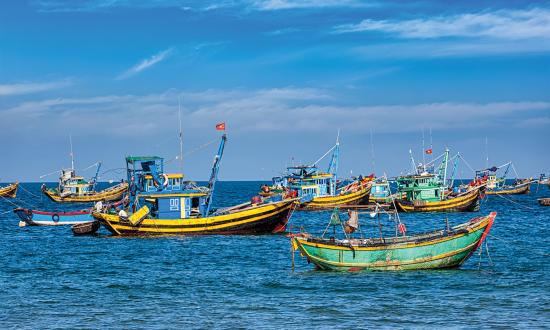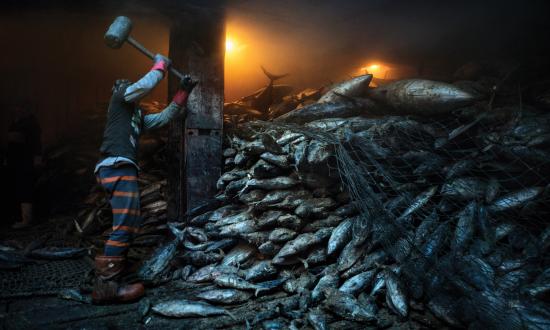While governments in the United States and Latin American and Caribbean nations focus on stopping narcotrafficking, illegal, unreported, and unregulated (IUU) fishing is quietly threatening the region’s food and economic security. Resources in the region have been exploited more gradually than in other parts of the world, but that is changing, and now is the time to act. The United States, with the U.S. Coast Guard and the National Oceanic and Atmospheric Administration (NOAA) as lead agencies, should work with the governments of Latin America, the Organization of American States (OAS), and the U.N. Food and Agriculture Organization (FAO) to develop national laws and regulations to help protect vital sea-based resources; improve international reporting and monitoring networks and sharing of best practices; and coordinate enforcement mechanisms.
An Important But Imperiled Resource
Every year, IUU fishing removes 26 million tons of fish valued at some $23 billion from the seas.1 Ninety-three percent of the world’s fisheries currently are either overfished or at their maximum sustainable levels, and worldwide consumption is expected to increase significantly by 2030, including a 33 percent rise in Latin America and the Caribbean alone.2 As fisheries near collapse in regions where fish are a primary source of protein, such as in Southeast Asia, fishermen are venturing farther out, and many already have taken advantage of South American waters, with or without the permission of local governments.
Because fish—and those who exploit them—can easily cross international maritime borders, collaboration among nations is vital to their protection. Many countries in Latin America and the Caribbean have the capacity and legal frameworks to protect sea-based proteins within their own 200-nautical mile exclusive economic zones (EEZs), but others do not. And the failure to protect fisheries within one EEZ can have negative consequences for neighboring regions.
Management of fisheries requires a careful balance between safeguarding each fish species and ensuring that those who rely on the fishery for food or employment have enough to meet their needs. Fishing limits must be adjusted annually to prevent depletion or allow an overfished species to recover. Monitoring must then continue throughout the season.
Successful management of fish stocks also must include an analysis of the number of commercial fishing licenses that can be responsibly distributed to domestic and international vessels. How this is done varies from country to country, but because the sale of fishing licenses can be a significant source of revenue, governments or officials in need of funds may be tempted to sell excessive licenses—or to turn a blind eye to illegal fishing in exchange for bribes.3
Sale of fishing licenses to internationally flagged vessels is a common practice and is not inherently harmful. Nonetheless, it is most common in countries that lack adequate fisheries management, increasing the probability of exploitation. The most prevalent distant-water fleet (DWF) is that of China, which at 2,600 vesselsis nearly twice as big as the second largest.4 Numerous DWF vessels have licenses to fish within Latin American EEZs, and others have been caught or accused of doing so illegally.
What Can Be Done
The FAO has started several programs to help countries develop a legal framework for fisheries enforcement, and some countries in the region have signed on to these voluntary agreements. Most prominent is the Agreement on Port State Measures (PSMA), which aims to prevent vessels engaged in IUU fishing from using ports and landing their catches and to coordinate monitoring, control, and surveillance operations to share information about vessel registration internationally.5 Unfortunately, it lacks enforcement mechanisms necessary to protect fish stocks at sea.
To further coordinate requirements and enforcement, the United States should work with fellow OAS member states to develop a Fisheries Commission for Latin America and the Caribbean modeled on the North Pacific Fisheries Commission (NPFC). The NPFC facilitates information-sharing and enforcement efforts among member states, which currently include Canada, China, Japan, South Korea, Russia, Taiwan, the United States, and Vanuatu. The commission maintains a list of vessels permitted to fish in member EEZs and encourages a team mentality in protecting shared fish stocks. It also authorizes registered officers embarked on registered official vessels to board fishing boats from any member state to enforce applicable laws. Such a program in Latin America would augment efforts already in place and make it harder for IUU vessels to exploit the region’s fisheries. A regional fisheries commission could be a force multiplier to ensure that all member states, regardless of capacity, can better protect these vital resources.
In September 2020, the U.S. Coast Guard published its inaugural Illegal, Unreported, and Unregulated Fishing Strategic Outlook, outlining both the threat posed by and a way forward for countering IUU.6 It established three lines of effort for success: promotion of enforcement operations, countering negative state behaviors, and expanding multilateral enforcement efforts. In this spirit, the United States could offer support to countries with less capacity in the development of national-level regulations and regional agreements through the OAS. NOAA, as the United States’ lead agency for fisheries management, is ideally suited to coordinate U.S. participation in such an endeavor. While the PSMA and other FAO efforts are a good start to better management of fisheries in the Americas, they cannot replace the benefits of sharing lessons and best practices among neighbors.
Once laws and regulations are in place to manage fisheries, governments must have an effective means of monitoring their use and identifying those who are fishing illegally. Aircraft and vessels are expensive, and a patrol force large enough to cover even 100 nautical miles of coastline can be cost prohibitive. For example, a fleet of at least 245 Chinese-flagged vessels has been operating on the edge of Ecuador’s EEZ for several years.6 Ecuadorian authorities are certain these vessels are entering protected waters to fish, but they have only one helicopter, one coast guard vessel, and one spotter plane to manage thousands of miles of water around the Galapagos Islands. This makes it easy for offending vessels to drive into the EEZ to fish and then slip back into international waters before they can be identified.7
Drone and satellite technology can make it easier and cheaper for countries to monitor their waters and use their enforcement assets more efficiently. Commercially available satellites can track fishing fleets, even those that fail to use standard vessel tracking systems, such as the Automatic Identification System and Vessel Monitoring System.8 States can then identify violators and collect information for use in their prosecution.
By coordinating with fellow OAS members, the countries of the region can maximize the benefits of these systems and technologies. The FAO has taken an important first step by creating the Network for the Exchange of Information and Shared Experiences between Latin American and Caribbean Countries to Prevent, Deter, and Eliminate IUU Fishing, with NOAA as a key contributor.9 The U.S. government should support and further these efforts, as well as coordinate with the OAS to provide a forum for communicating best practices and lessons learned.
The establishment of a shiprider program would provide another powerful enforcement tool. The U.S. Coast Guard has used shiprider programs extensively in the Pacific islands, where many small nations lack the resources to patrol vast swaths of ocean. Enforcement officials from these nations ride on board U.S. Coast Guard or Navy ships and aircraft to identify vessels fishing illegally in their waters. With the support of U.S. enforcement officials, they then apply their nation’s laws and regulations to the interdicted vessel. The U.S. Coast Guard and the Royal Canadian Mounted Police also use shiprider programs, deputizing one another’s officers and interdicting maritime smugglers who previously used the maritime border to evade capture. While this method has been used in Latin America for drug interdiction, it has potential for protecting the region’s fisheries, as well. Shiprider programs that team countries with greater enforcement resources with their less-capable neighbors, along with other collaborative enforcement efforts, could build partnerships to protect the fish stocks they share.
OAS member states must act now to develop and strengthen the enforcement mechanisms necessary to protect fisheries before they are overexploited. By working with the FAO and OAS to ensure that all Latin American and Caribbean countries are able to develop and enforce effective regulations, particularly through the creation of a multilateral fisheries commission, the United States can build trust and play a key role in safeguarding the hemisphere’s fish stocks, ensuring these resources are available to meet the needs of future generations.
1. Catherina Valenzuela-Bock, “First Treaty on IUU Fishing to Enter into Force (May 16, 2016),” International Law in Brief (American Society of International Law, 3 June 2016), www.asil.org/blogs/first-treaty-iuu-fishing-enter-force-may-16-2016.
2. Zhang Chun, “China Targets Distant-Water Criminals with New Fisheries Law,” China Dialogue Ocean, 21 January 2020. https://chinadialogueocean.net/12714-china-fisheries-law-distant-water-fishing/; and FAO Regional Office for Latin America and the Caribbean, “Fish Consumption in Latin America and the Caribbean to Grow 33% by 2030,” Food and Agriculture Organization of the United Nations, 9 July 2018, www.fao.org/americas/noticias/ver/en/c/1144409/.
3. United Nations Office on Drugs and Crime, Rotten Fish: A Guide on Addressing Corruption in the Fisheries Sector (Vienna, Austria: United Nations, 2019), www.unodc.org/documents/Rotten_Fish.pdf.
4. Chun, “China Targets Distant-Water Criminals with New Fisheries Law”; Jewell Fraser, “Chinese Fishing Fleets a Growing Presence in Latin American Waters,” Seafood Source (3 December 2017), www.seafoodsource.com/news/supply-trade/chinese-fishing-fleets-a-growing-presence-in-latin-american-waters; and Stimson, Shining a Light: The Need for Transparency Across Distant Water Fishing, www.stimson.org/wp-content/files/file-attachments/Stimson%20Distant%20Water%20Fishing%20Report.pdf.
5. Food and Agriculture Organization of the United Nations, “Agreement on Port State Measures,” www.fao.org/port-state-measures/en/. The provisions of the PSMA apply to fishing vessels seeking entry into a designated port of a state which is different from their flag state.
6. U.S. Coast Guard, Illegal, Unreported, and Unregulated Fishing Strategic Outlook (Washington, DC: U.S. Coast Guard, 2020), www.uscg.mil/Portals/0/Images/iuu/IUU_Strategic_Outlook_2020_FINAL.pdf, 2.
7. Fish Information and Services, “Boats and Military Submarines Monitor 245 Chinese Fishing Vessels in Galapagos,” Fish Information and Services, 25 April 2019, https://fis.com/fis/worldnews/worldnews.asp?l=e&country=0&special=&monthyear=&day=&id=102584&ndb=1&df=0.
8. “China’s Illegal Presence in Latin American Seas Grows, Making an Enemy of Leftist Ecuador,” Stop Illegal Fishing, 22 August 2017, https://stopillegalfishing.com/press-links/chinas-illegal-presence-latin-american-seas-grows-making-enemy-leftist-ecuador/.
9. Gregory Poling, Illuminating the South China Sea’s Dark Fishing Fleets (Center for Strategic and International Studies, 9 January 2020), https://ocean.csis.org/spotlights/illuminating-the-south-china-seas-dark-fishing-fleets/.
10. “Countries of the Information and Experience Exchange Network Between Latin American and Caribbean Countries to Prevent, Disqualify, and Eliminate IUU Fisheries,” www.redpescaindnr.gob.pe/index#integrantes.



